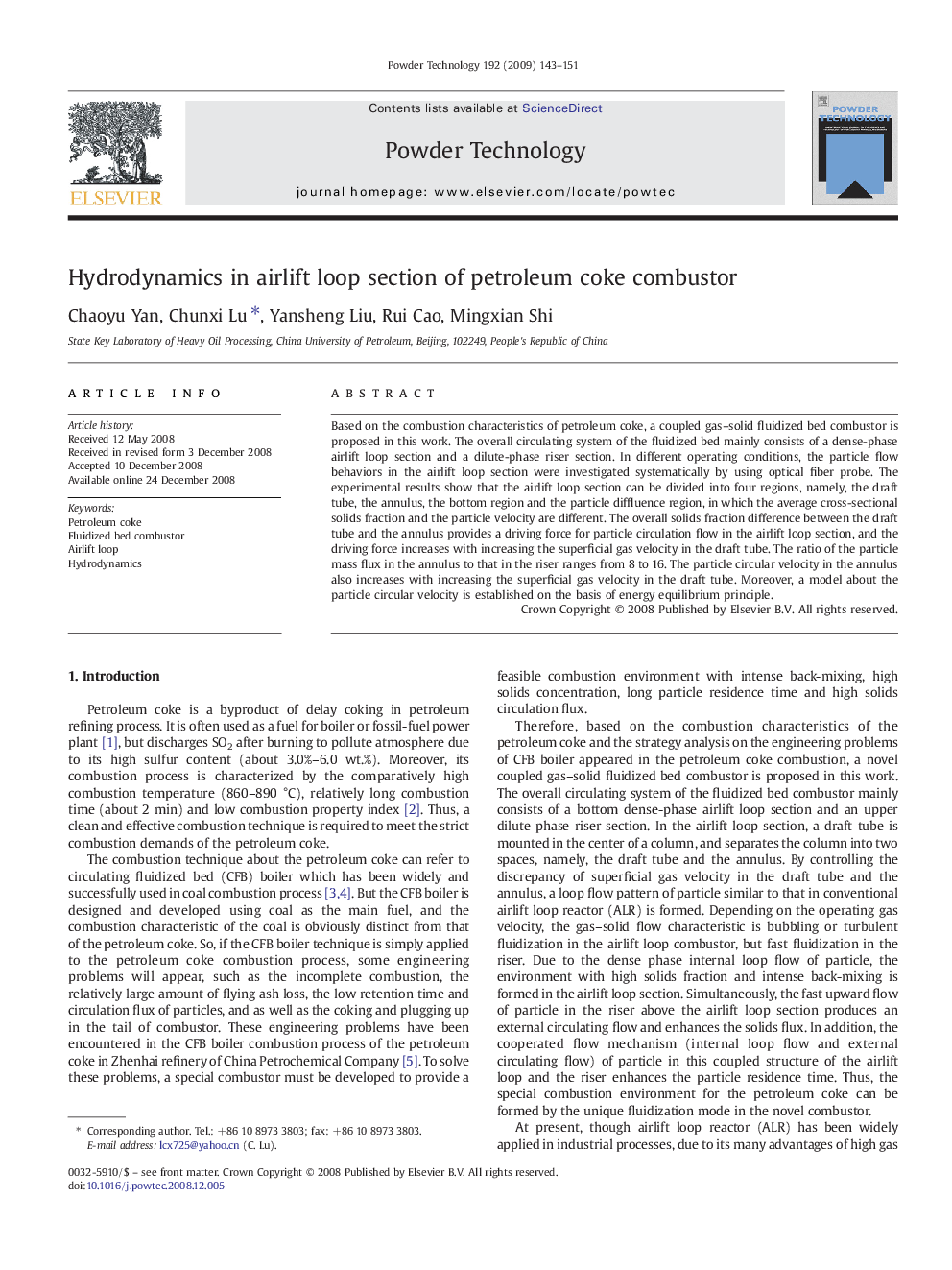| کد مقاله | کد نشریه | سال انتشار | مقاله انگلیسی | نسخه تمام متن |
|---|---|---|---|---|
| 238035 | 465738 | 2009 | 9 صفحه PDF | دانلود رایگان |

Based on the combustion characteristics of petroleum coke, a coupled gas–solid fluidized bed combustor is proposed in this work. The overall circulating system of the fluidized bed mainly consists of a dense-phase airlift loop section and a dilute-phase riser section. In different operating conditions, the particle flow behaviors in the airlift loop section were investigated systematically by using optical fiber probe. The experimental results show that the airlift loop section can be divided into four regions, namely, the draft tube, the annulus, the bottom region and the particle diffluence region, in which the average cross-sectional solids fraction and the particle velocity are different. The overall solids fraction difference between the draft tube and the annulus provides a driving force for particle circulation flow in the airlift loop section, and the driving force increases with increasing the superficial gas velocity in the draft tube. The ratio of the particle mass flux in the annulus to that in the riser ranges from 8 to 16. The particle circular velocity in the annulus also increases with increasing the superficial gas velocity in the draft tube. Moreover, a model about the particle circular velocity is established on the basis of energy equilibrium principle.
The hydrodynamics in the four regions of the airlift loop combustor was investigated systematically by using optical fiber probe in different operating conditions. The axial distributions of average cross-sectional solids fraction and particle velocity, the overall solids fraction in the draft tube and the annulus, the ratio of solids flux in the annulus to that in the riser, and the particle circulation velocity were obtained. In the end, a model describing particle circulation velocity was established on the basis of energy equilibrium principle.Figure optionsDownload as PowerPoint slide
Journal: Powder Technology - Volume 192, Issue 2, 5 June 2009, Pages 143–151